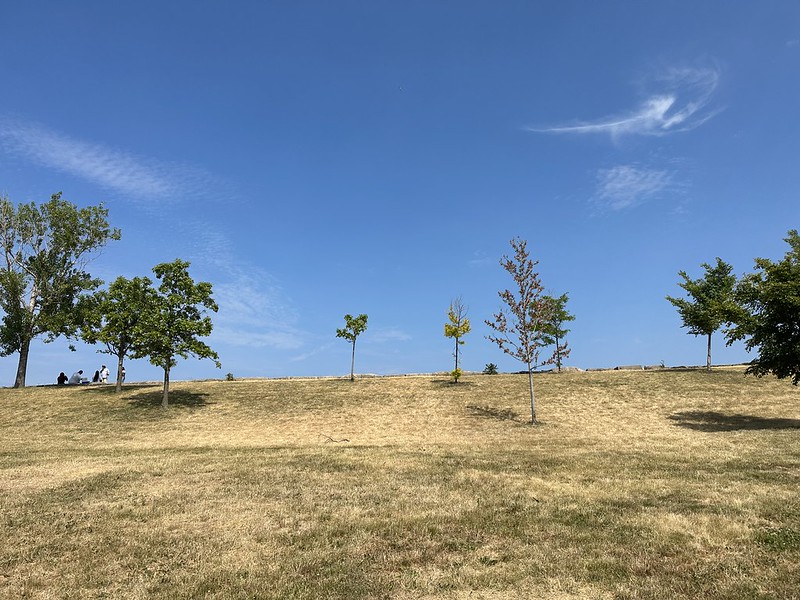October 26, 2024
This cloud caught my eye.


The Perseids never became visible thanks to cloud cover that moved in with the evening, but at least sunset gave off a nice glow and showed off the downtown Chicago skyline.
During most of the winter in Chicago, the sky is a uniform leaden gray. Today, however, there was a moment of sunrise with some defined clouds. Right under the sunrise are the steel mills of Indiana with their plumes. During summer, the sun will rise over the Chicago Park District field house to your left.

More January sea smoke on Lake Michigan. See this article by Catherine Schmitt for the science behind sea smoke.
After months of abnormally dry to severe drought conditions, Chicago had a near record “rainfall event” the weekend of July 1–2, especially on Sunday.
To me, it seemed like a normal rain, but I don’t have a personal basement to worry about. I gave up any thought of outdoor activities and stuck to reading, TV, etc. I figured I’d be grateful if this rain, plus a few others that preceded it, would put a dent in the severe drought conditions.
As of July 11, Chicago was still abnormally dry, but look at the difference.
June 10, 2023:

Same area, July 9, 2023, a little less than a month later:

When I noticed the orange light on my weather radio flashing the evening of July 12, I was hoping for beach hazards or at worst a flash flood watch, but, no, it was a tornado watch. As the sky got darker, it flipped to the red light — tornado warning. Not long after that, the sirens started — an eerie sound in the eerie premature twilight.
Over the next hour or so I saw several reports of tornadoes, starting with Summit in the southwest suburbs. Then it seemed like they were everywhere — southwest, west, north.
The sky brightened for a moment, then darkened, then brightened again just as another brief deluge descended. I looked — yes, there was a rainbow (and a very faint second mirror image rainbow). It faded, then reappeared, or maybe it was a second one in a similar spot. The second, with a faint mirror image like the first, was the full arch, which I couldn’t capture from my window.
It faded as blue sky appeared to the east, then pink from the setting sun tinged the clouds that had piled up.



